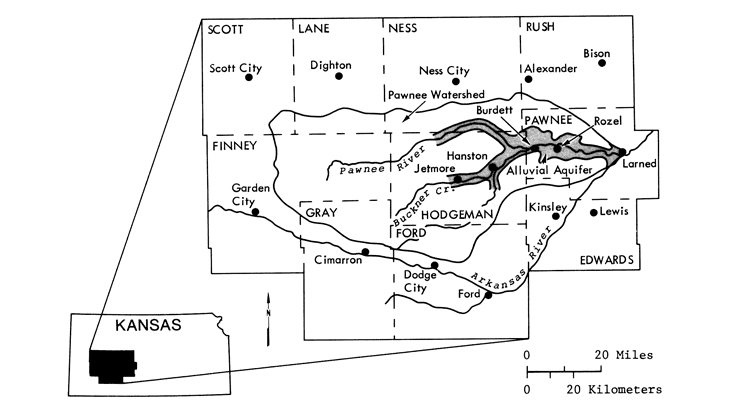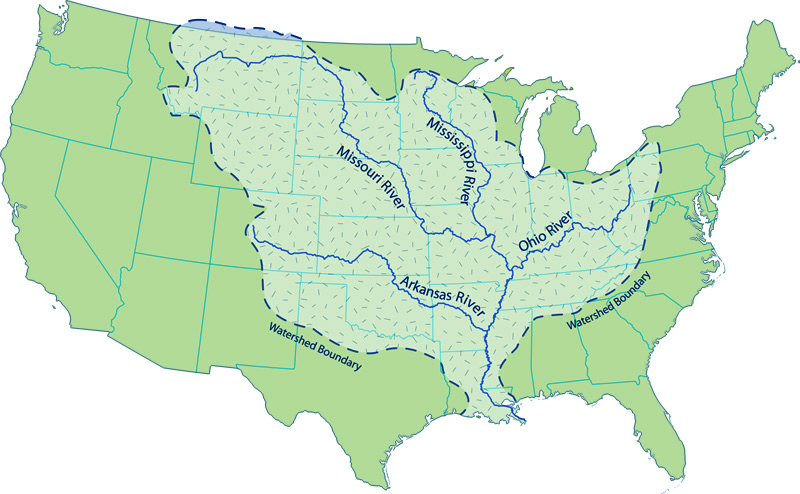Watersheds and River Basins

A watershed is an area of land from which all water drains into a single waterway, such as a creek, small river, lake, or wetland. The water comes from smaller creeks, called tributaries, that flow into the waterway and surface runoff from rain, melting snow, and other sources. For example, water from Buckner Creek and other tributaries flows into the Pawnee River in the Pawnee Valley watershed of western Kansas. Any runoff that doesn't evaporate or seep into the ground eventually runs directly into the Pawnee River or into its tributaries, which then flow into the river.

A river basin encompasses two or more watersheds. The main stream draining each watershed runs toward the major river within a river basin. In the Upper Arkansas River basin, streams and runoff from the Pawnee Valley and other watersheds flow into the Arkansas River.
Kansas is covered by 12 river basins that also extend into surrounding states. Those basins are part of the larger Mississippi River basin, one of the five largest in the world.
